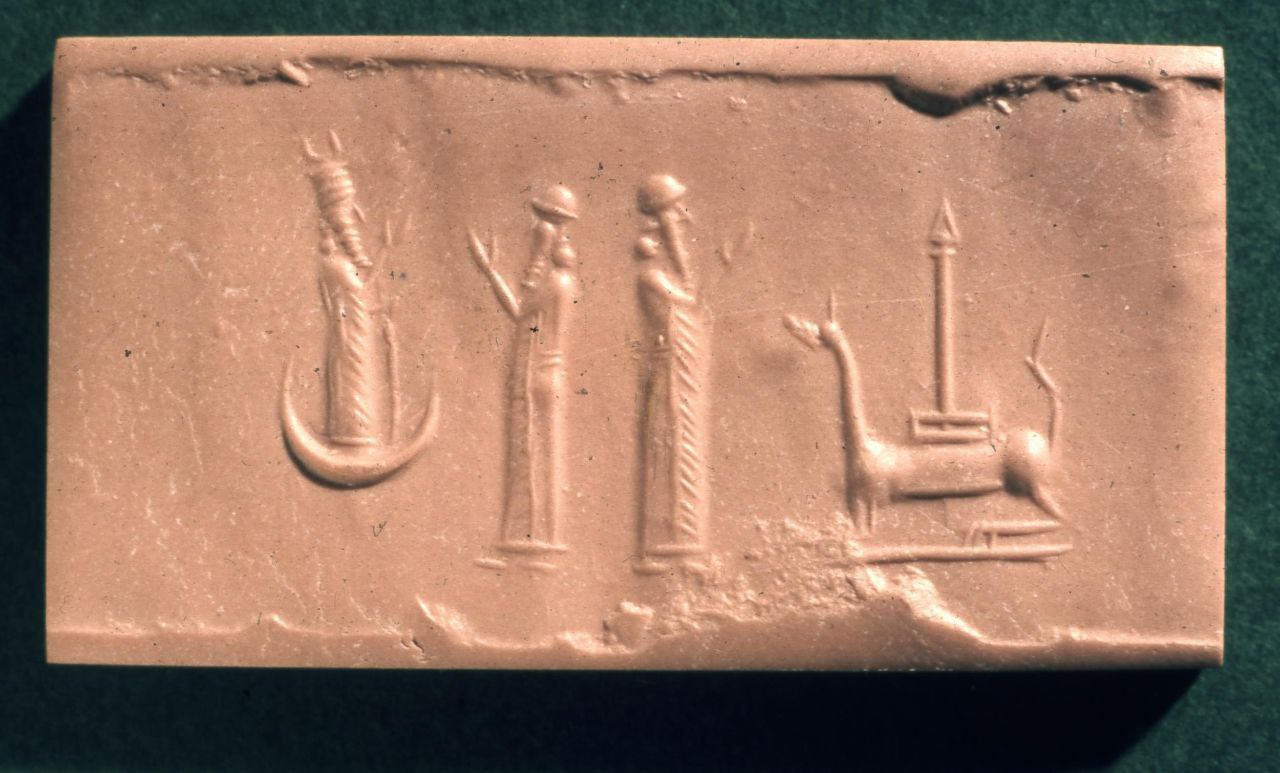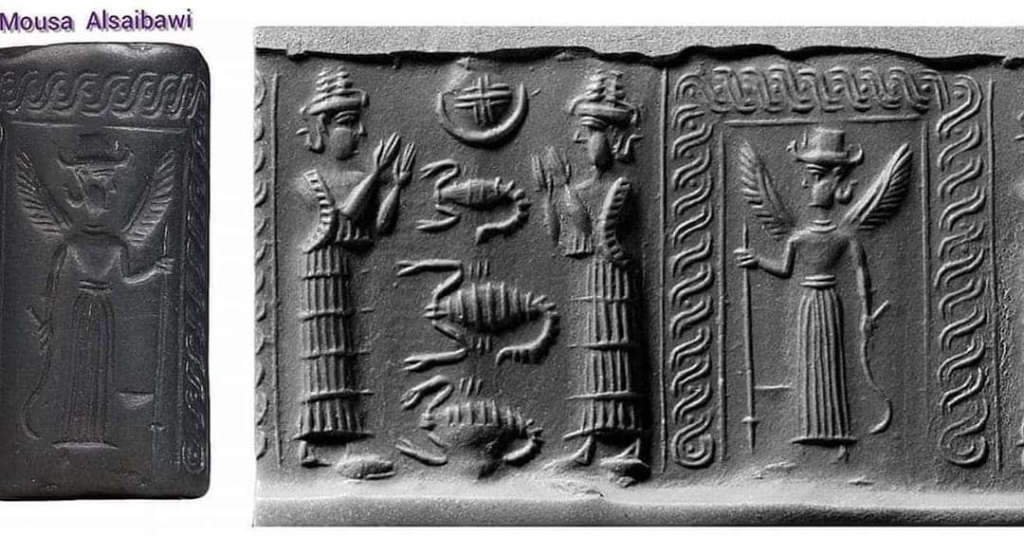
Two facing suppliant goddesses between them star disk in crescent three scorpions )
one above other Winged goddess with spear and scimitar in chamber formed by guilloches Old Babylonian 1650 B.C.1350 B.C. Mesopotamia iraq
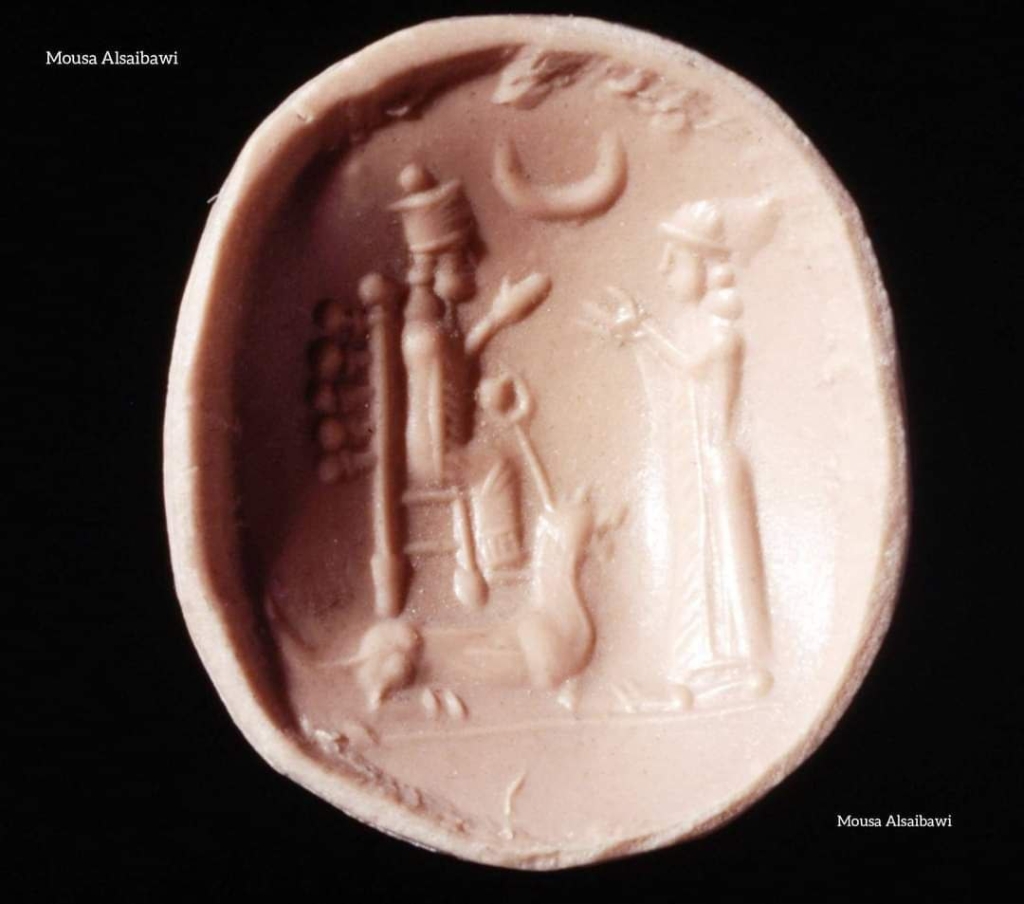
The Healing Goddess Gula
stamp-seal
Blue chalcedony conical stamp-seal; on the base beneath a crescent a worshipper in a fringed robe stands facing the goddess of healing Gula who sits on her star-studded throne which rests on her reclining dog she raises one hand and in the other she holds a ring and the dog’s lead.
Late Babylonian 700BC-550BC Mesopotamia iraq
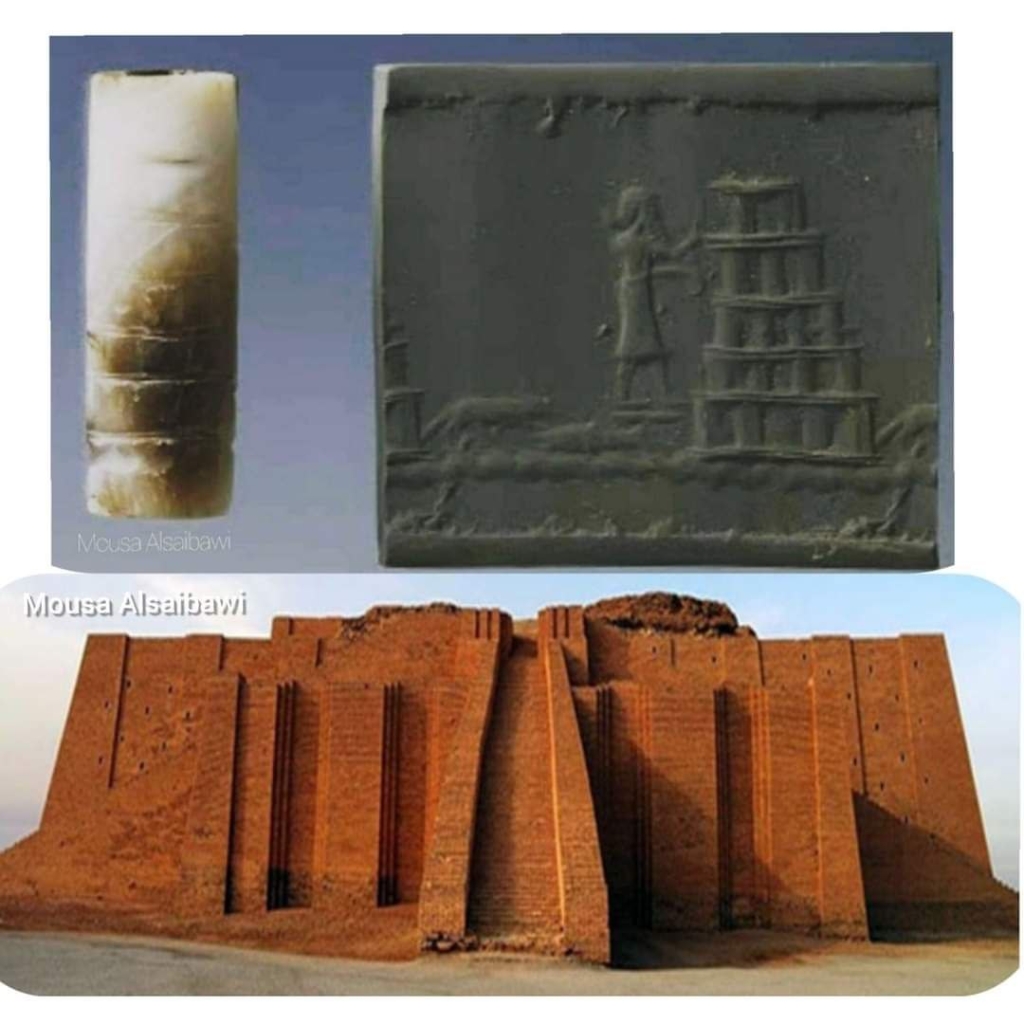
Cylinder seal with depiction of a ziggurat
Date created: 13th century BCE
Location: Babylon, Iraq
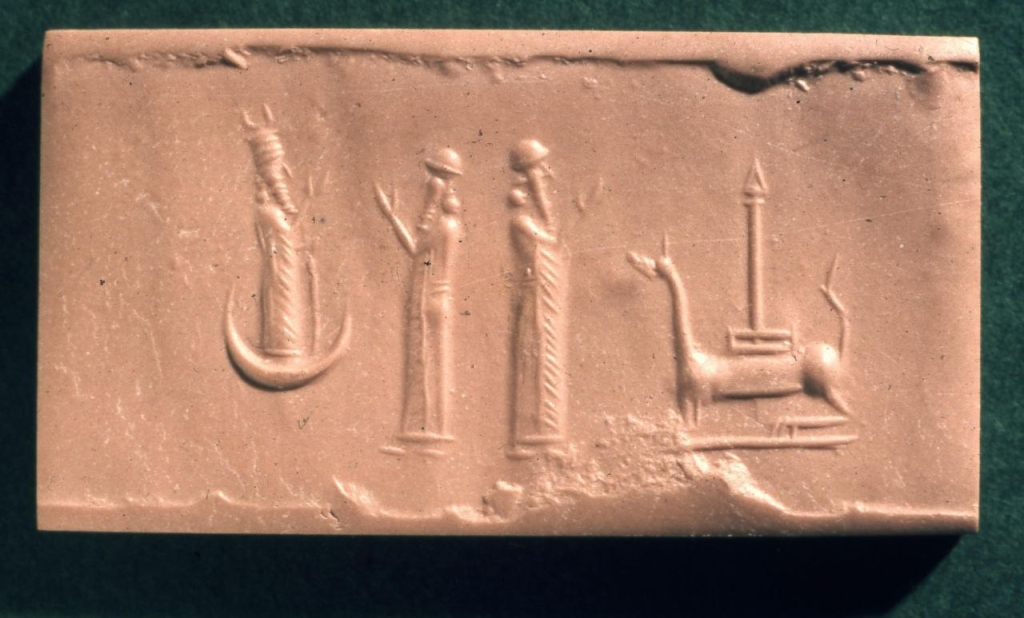
Cylindrical seal with three Personals with mushkhushshu
Eyed sardonyx quartz (probably artifically dyed agate) cylinder seal; banded, brown, white-brown and white; a bearded god (probably the moon god Sin) in a tall, horizontally-ridged, crescent-topped, cylindrical head-dress, holding a staff in one hand and raising the other, rises from a crescent and hovers facing right, before a bearded worshipper, who wears a round, narrow-brimmed hat and raises one hand. Back to back with this worshipper stands another identical figure, who raises one hand before a couchant ‘mushhushshu’ dragon (a composite creature) with the spade of Marduk on a stand on its back. All three figures wear vertically-fringed, double-belted robes. The figures are small in relation to the height of the seal
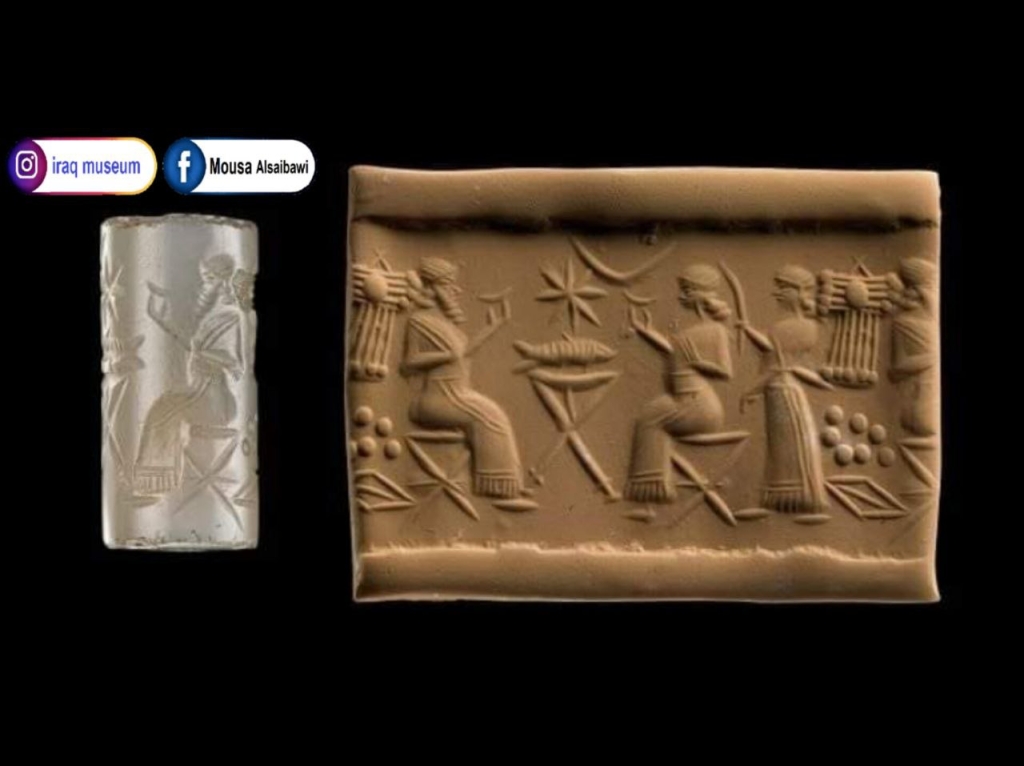
Grey-blue chalcedony cylinder seal; two figures sit on camp stools facing each other and raising shallow cups, on either side of a cross-legged table which has bull’s legs; on the table lies a fish and above a star and a crescent; behind the figure on the right stands an attendant with a fly-whisk, and behind the attendant are a winged disc, the Pleiades and a rhomb. All three figures have identical shoulder-length hairstyles and wear wide-belted robes with a fringe round the hem, lines across the chest and double lines across the skirt; the attendant also has lines indicating pleating at the back of his robe. The figure on the left is bearded; the other two are clean-shaven, but the attendant wears a sword and is therefore male.
Findspot: Babylon (Iraq) Late Babylonian, Neo-Assyrian
attendant, sun/moon, planet/constellation, mammal, insect, fish,
British museum
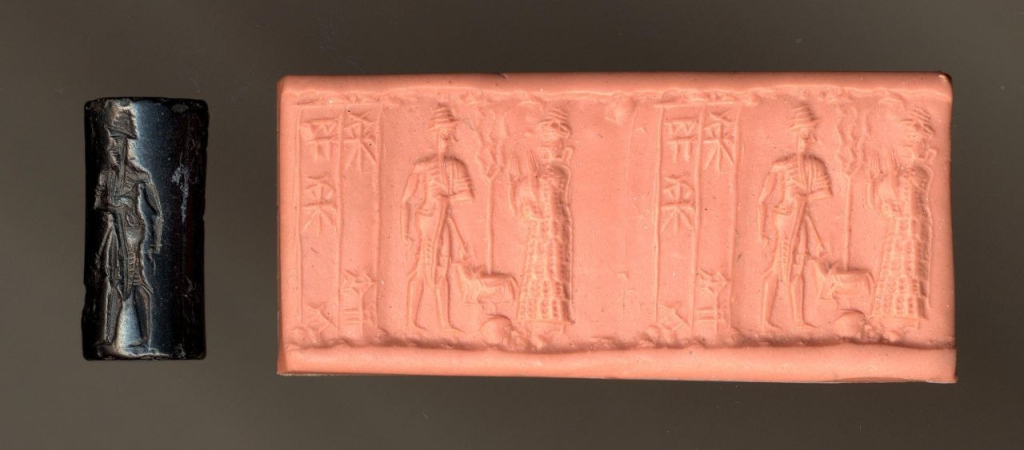
Hematite cylinder seal; the king with a mace, wearing a tiered and horned (?) head-dress, faces the suppliant goddess on a base-line; between them is a couchant, hump-backed bull, facing right, supporting a lightning fork on its back; the traces of an earlier inscription and frame can be seen. The bull and lightning fork, the amended head-dress of the king and patterning of the goddess’s robe are probably due to the same recutting; edges chipped.
View lessabout description
Old Babylonian
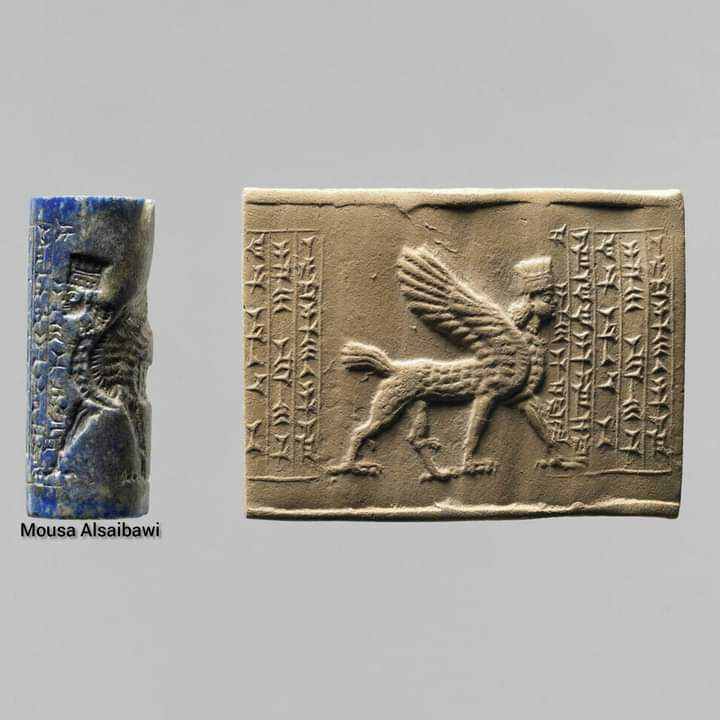
Clarification on the object: Cylinder of a Babylonian decorated with the image of a winged monster with the head of a woman. The legend begins with a prayer “by the word of Sîn and Marduk, the gods his lords that whoever imprints this seal be satisfied with life
Date de création/fabrication : Néo-babylonien (-604 – -539)
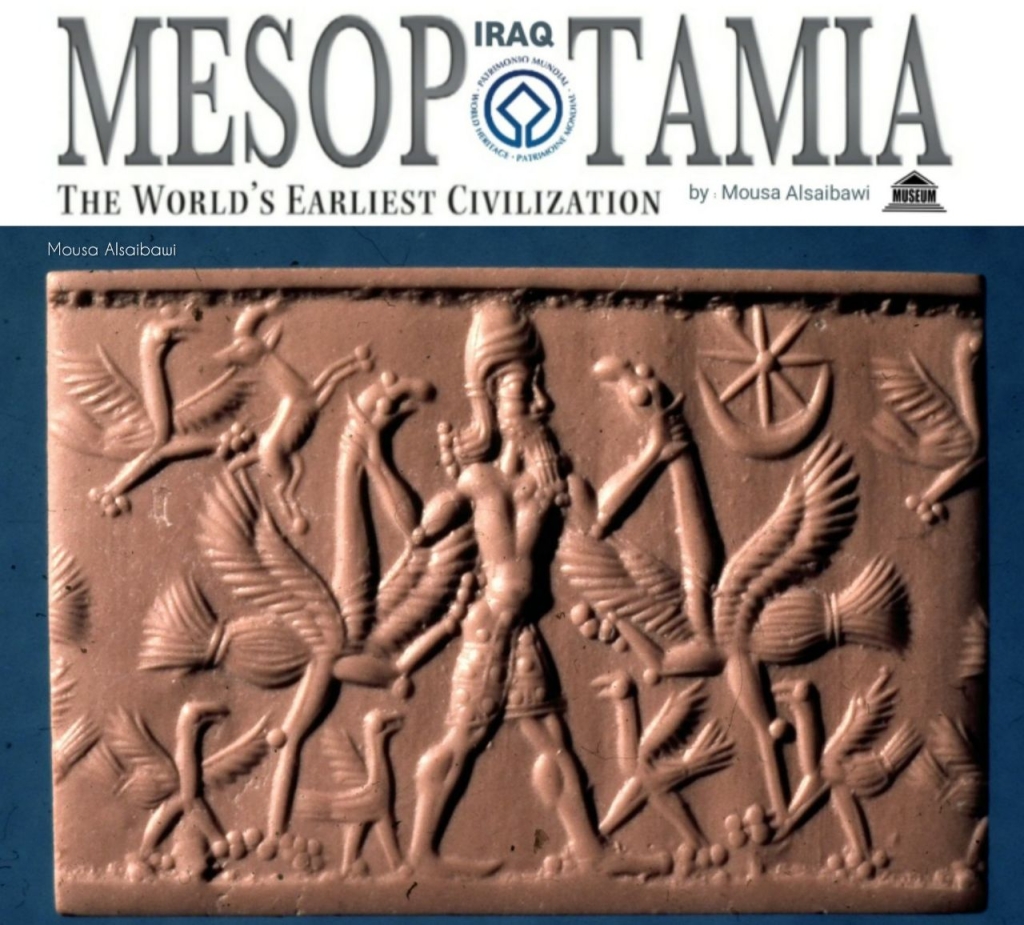
Grey-brown chalcedony cylinder seal (white / cream patination was probably acquired during burial); antithetical group consisting of a four-winged hero in the centre, facing right, flanked by ostriches which he grasps by the neck; beneath each ostrich are two ostrich chicks; in the upper field above the ostrich on the left, a smaller ostrich pursues a gazelle, while above the ostrich on the right is an eight-pointed, globe-centred star set in a crescent. The hero wears an oval-topped helmet with two pairs of horns
Cultures Babylonian – Neo-Assyrian Mesopotamia iraq
.
.
.
.


